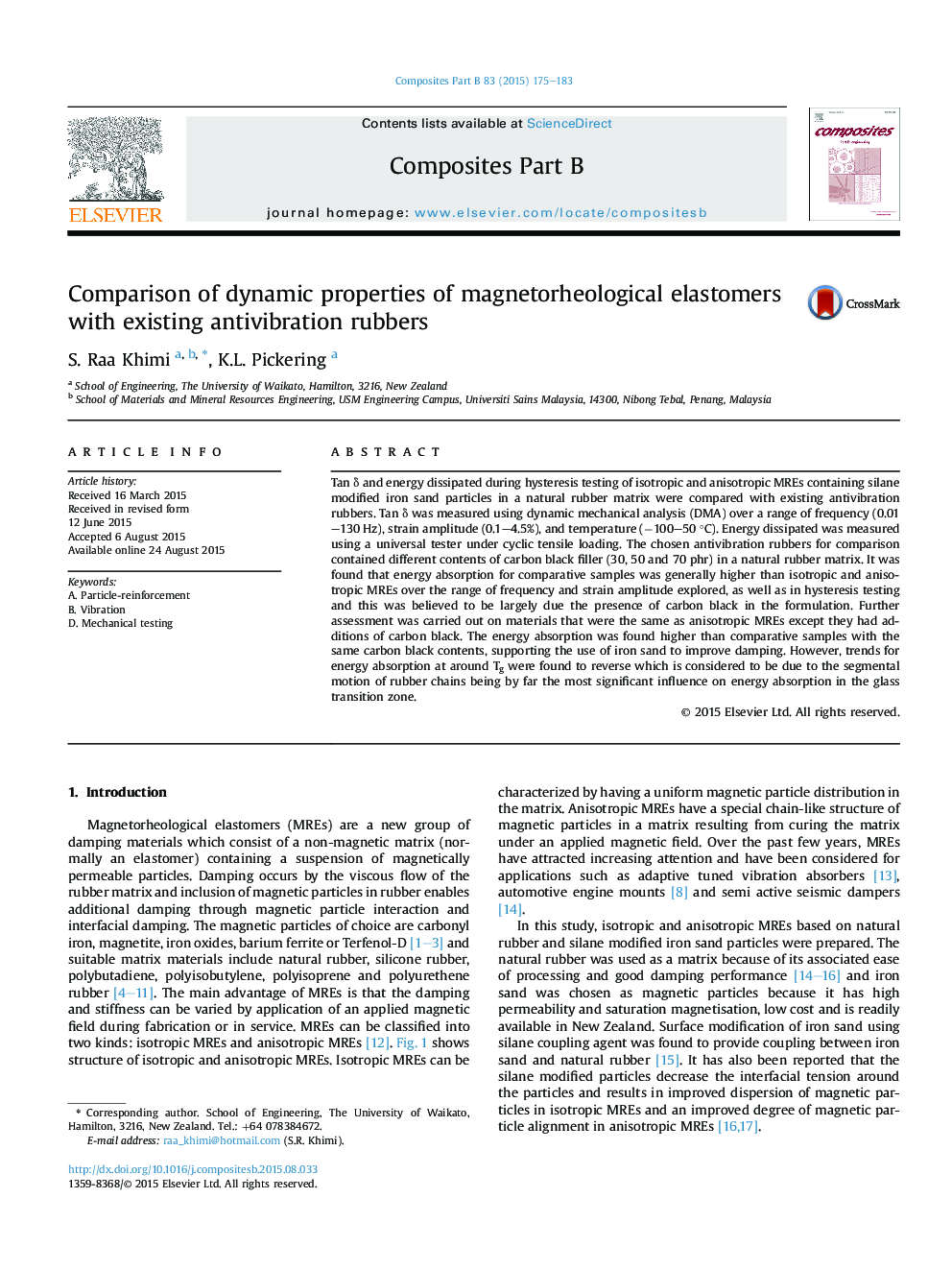| Article ID | Journal | Published Year | Pages | File Type |
|---|---|---|---|---|
| 817180 | Composites Part B: Engineering | 2015 | 9 Pages |
Tan δ and energy dissipated during hysteresis testing of isotropic and anisotropic MREs containing silane modified iron sand particles in a natural rubber matrix were compared with existing antivibration rubbers. Tan δ was measured using dynamic mechanical analysis (DMA) over a range of frequency (0.01–130 Hz), strain amplitude (0.1–4.5%), and temperature (−100–50 °C). Energy dissipated was measured using a universal tester under cyclic tensile loading. The chosen antivibration rubbers for comparison contained different contents of carbon black filler (30, 50 and 70 phr) in a natural rubber matrix. It was found that energy absorption for comparative samples was generally higher than isotropic and anisotropic MREs over the range of frequency and strain amplitude explored, as well as in hysteresis testing and this was believed to be largely due the presence of carbon black in the formulation. Further assessment was carried out on materials that were the same as anisotropic MREs except they had additions of carbon black. The energy absorption was found higher than comparative samples with the same carbon black contents, supporting the use of iron sand to improve damping. However, trends for energy absorption at around Tg were found to reverse which is considered to be due to the segmental motion of rubber chains being by far the most significant influence on energy absorption in the glass transition zone.
